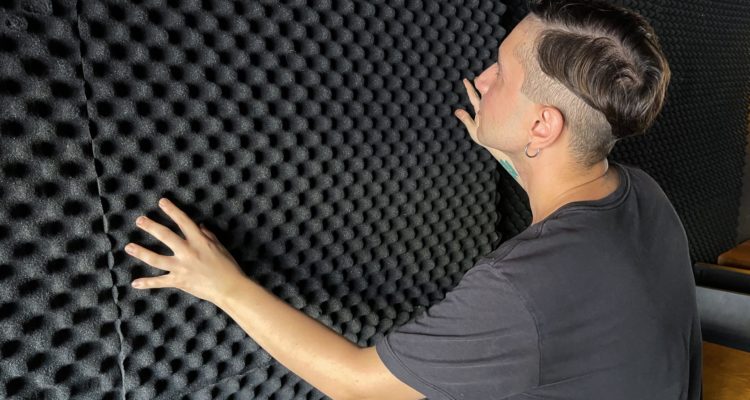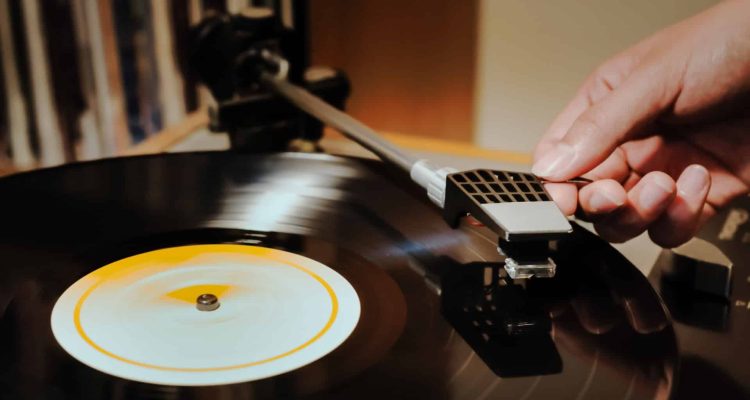

So you want to turn some untreated room in your home or other random building into a professional mixing and recording environment, but you probably don’t have an unlimited budget to get it done. Regardless, it’s still possible to acoustically treat a room with the right materials and approach.
Why Bother with Acoustic Treatment?
Why do you need to bother with this? If you’re recording or mixing in your home studio, you will probably hear a lot of unwanted reverb, ringing, and reflections. Because you aren’t getting an accurate representation of what is being played, there’s no way to make the right decisions about whether it is good or bad, or how it might sound when played back somewhere else.
Sound waves travel in a room outward from their source. The direct sound is the sound from your monitors, or sound source into a microphone, before it reflects off a surface. Beyond that you have sound bouncing all around the room. These reflections can cause the sound from your monitors, or the sound into your microphones, to be very uneven and colored. This will result in less than stellar recordings.
What Is Acoustic Treatment?
Acoustic treatment refers to adding enhancements to a room to improve the environment for mixing or recording. It’s not the same thing as soundproofing, which is the process of isolating one listening or recording environment from another.
The essential thing about acoustic room treatment is to neutralize the sonics. You can achieve this by adding various absorption and diffusion treatment options in strategic places throughout the space.
What Are Sound Absorption and Diffusion?
The main acoustic problems that occur in a home recording or mixing studio: reflection points, standing waves, and room modes. The room size, dimensions, and construction all contribute to the acoustics.
Reflections can be treated with absorption, which can dampen the reflections. There are many ways to add absorption to a room, it could be as simple as adding heavily upholstered furniture, like a couch, to having custom-manufactured panels added to the walls and ceiling.
Standing waves and room modes can be treated with diffusion. Diffusion works by scattering troublesome sound reflections in different directions, minimizing their negative impact on your music. Acoustic diffusers are made of stiff materials in various sizes and heights to achieve the desired results. Like with acoustic panels, the size and design of the diffuser will determine at what frequencies it works best. Combining acoustic absorbers and diffusers is generally necessary to get the maximum benefit.
Acoustically Treating Your Room
Every room is different, so there is no one-size-fits-all answer to acoustically treating a room. However, there are a few basic guidelines that can help you improve your acoustics and get the best results. There are even some ways to enhance acoustics on a massive budget.
Bass Traps
Bass traps can be used to reduce bass buildup caused by room modes. Bass traps can be made several ways, including absorptive panels, and Helmholtz absorbers. To be effective at lower frequencies, a panel needs to be very large. Helmholtz absorbers are tuned cavity absorbers that affect a narrow frequency band. Bass trap dimensions will need to be a quarter wavelength of the frequency. As an example, a quarter wavelength of 60Hz is 4.69 feet.
Bass traps are generally added to corners and boundaries where walls meet, as this is where a lot of bass buildup originates.
Acoustic Panels
Acoustic panels absorb a wide range of sound frequencies. Find the areas in your room that might be the most problematic. In some rooms, it might be the entire wall or just part of it. Adding acoustic panels in the areas around your monitors will help reduce destructive early reflections.
The size, thickness density, and mounting affect how well the panels absorb and at what frequencies. The lower frequency of interest, the larger and denser the panel needs to be. A 2” thick panel generally is only good down to 500Hz. However, if you double that to 4”, it will generally be effective down another octave to 250Hz.
If you’re looking for the DIY approach, you can purchase 2”, 4”, or 6” rigid insulation panels such as Owens Corning 703, or rockwool, and cover them with fabric. Then, build a simple frame around them before hanging them on your walls.
Diffusers
As explained before, you will need some acoustic diffusers to scatter unwanted sound instead of absorbing it. Without these, your room will begin to sound too sterile. Diffusers work well to eliminate late reflections of sound in areas further away from the listening position. The rear wall is usually a good location for diffusion.
Diffusers come in all shapes and sizes. Their look is interesting, bordering on abstract art. When made of wood, they are also incredibly heavy. You can certainly build some diffusers yourself if you have the tools and know-how. Otherwise, it might be good to purchase the right ones to suit your needs.
Improving Your Studio’s Acoustics at Little Cost
Let’s assume you don’t have any money in your budget right now for home studio acoustics. There are a few things you can do to improve your sound quality.
- Check the windows — Glass is incredibly reflective and will cause sound to bounce around your room. Make sure any windows are adjacent to your listening position and cover them with heavy curtains or packing blankets.
- Treat the corners — If you don’t have the budget for bass traps, heavily upholstered chairs in the corners can help a little.
- Room layout. — Position of your monitors is critical, make certain they are equidistant from your mix position and pointed towards you. Try to avoid them pointing directly at an untreated wall or large flat surface.
Use High-Quality Sound Equipment
You can go to a lot of trouble to acoustically treat your room and still get poor results if you aren’t using the right sound equipment. Galaxy Audio helps artists and bands sound their best at affordable prices with some of the highest quality sound equipment on the market.
Top musicians, entertainers, installers, and audio professionals have continued to choose our products for decades. Whether you need speakers, microphones, or wireless solutions, find out how our products and service can deliver the results you need.






